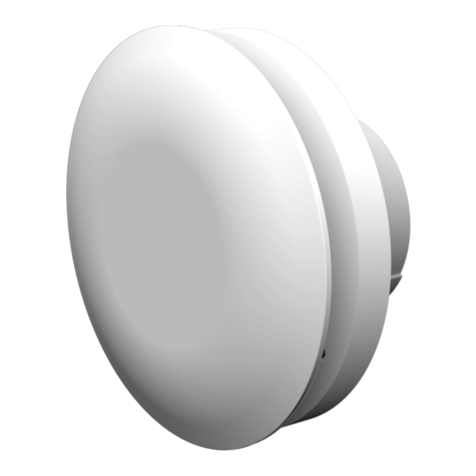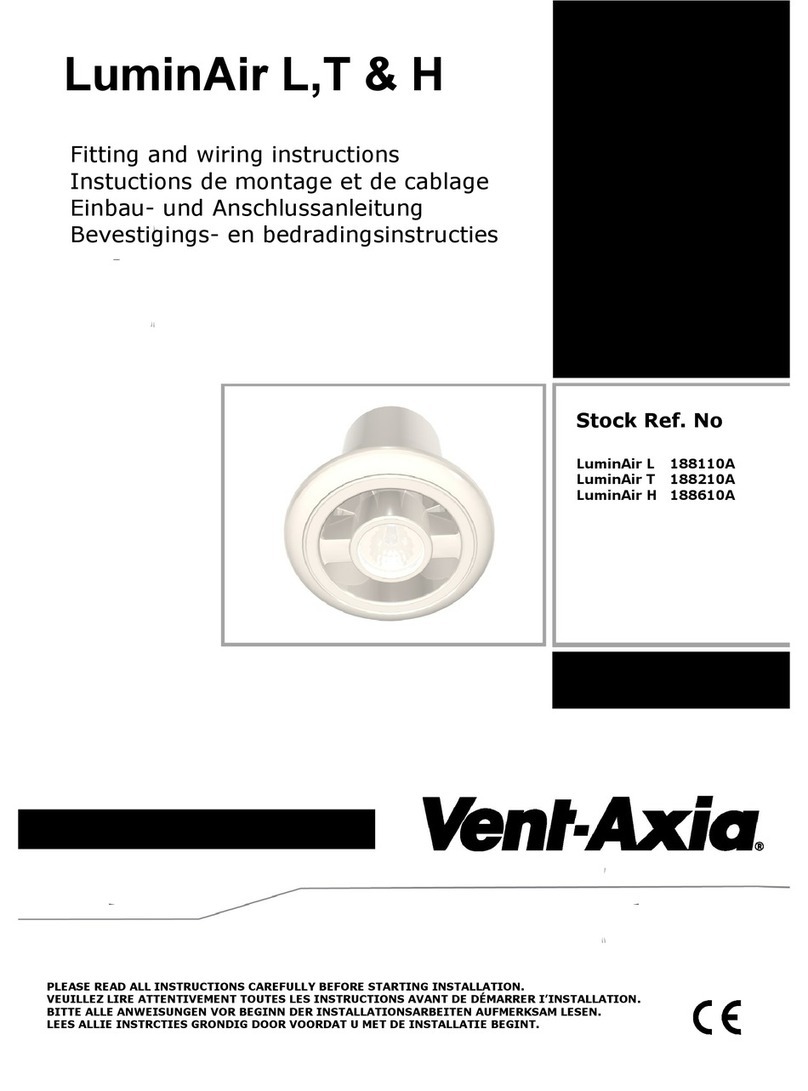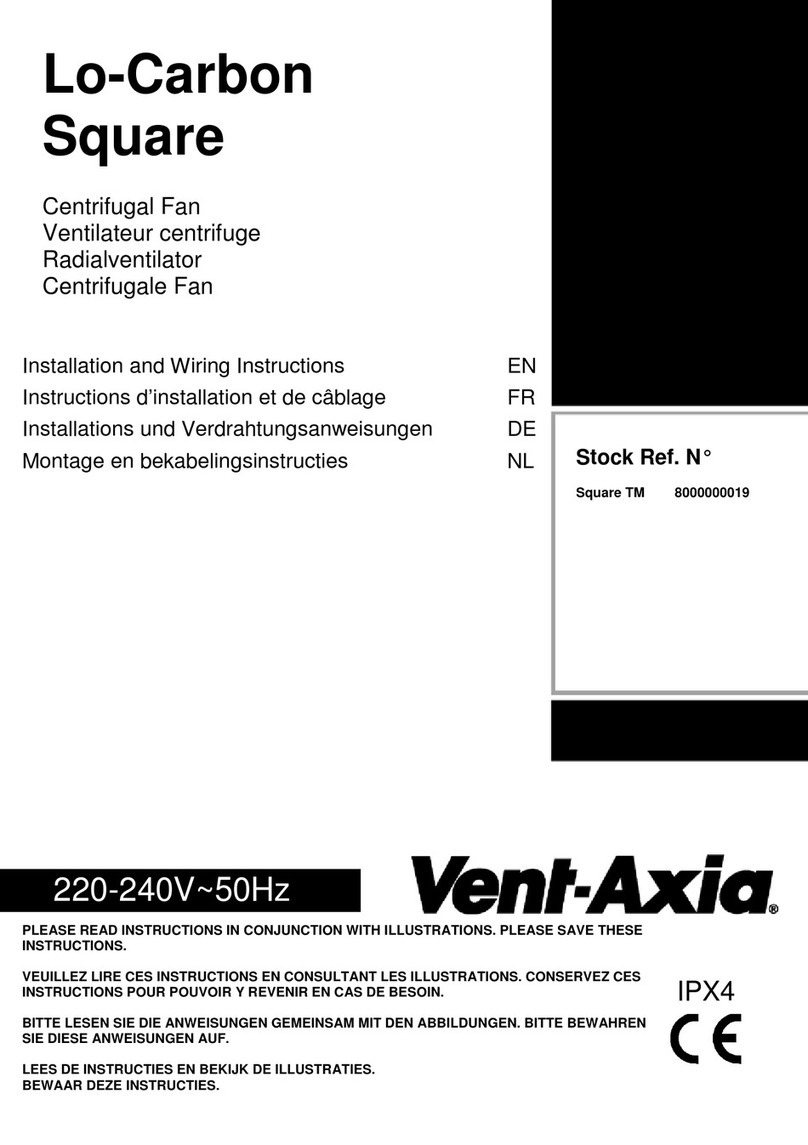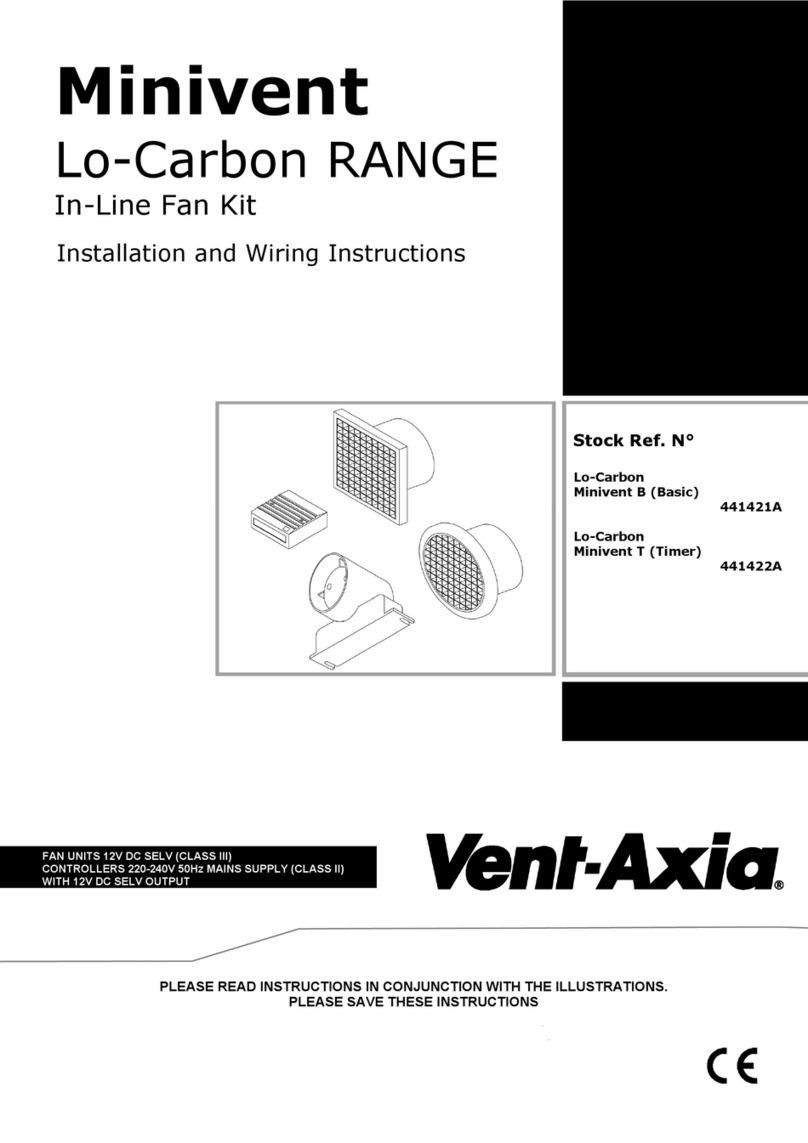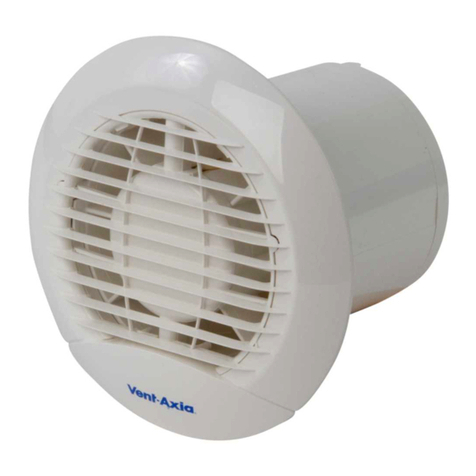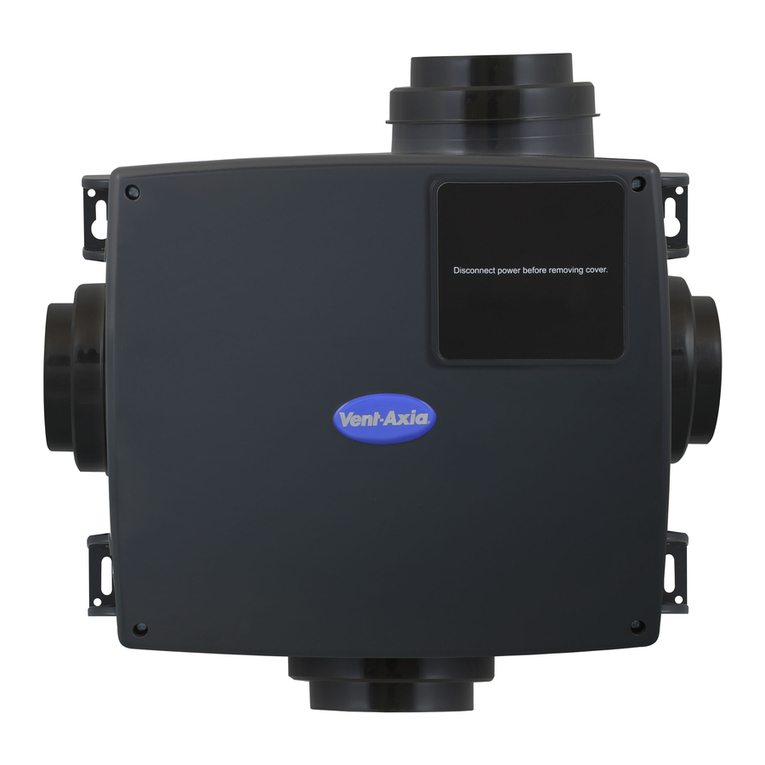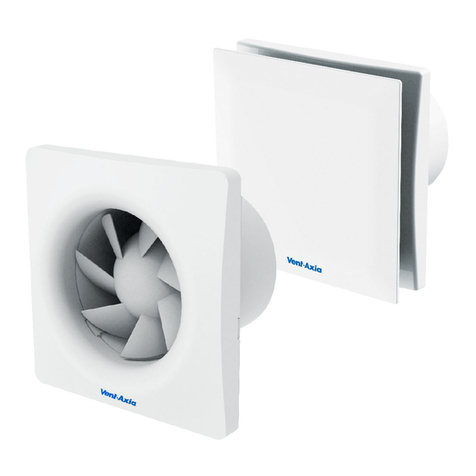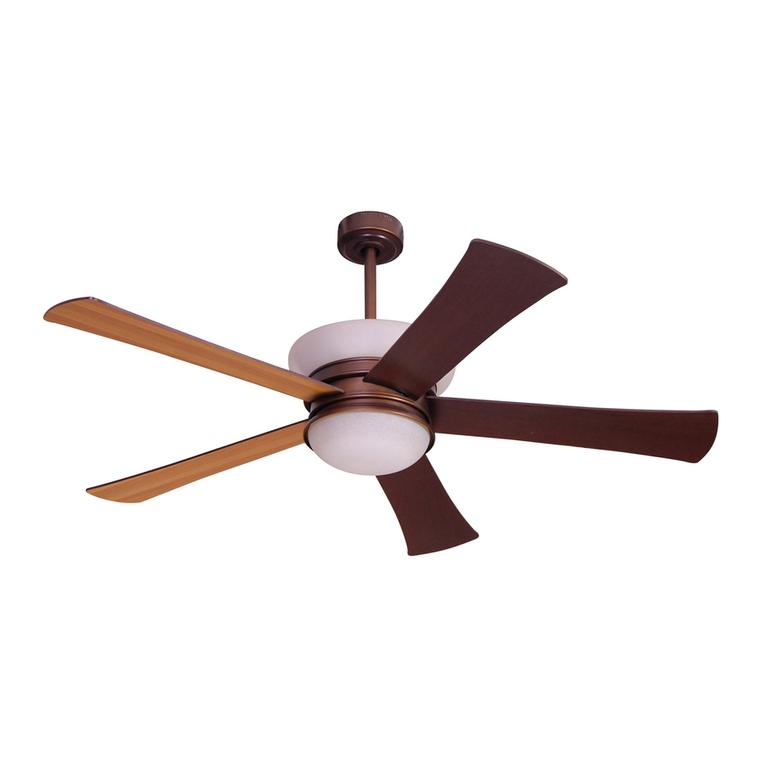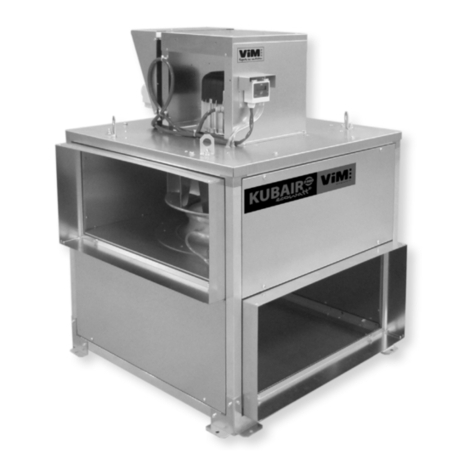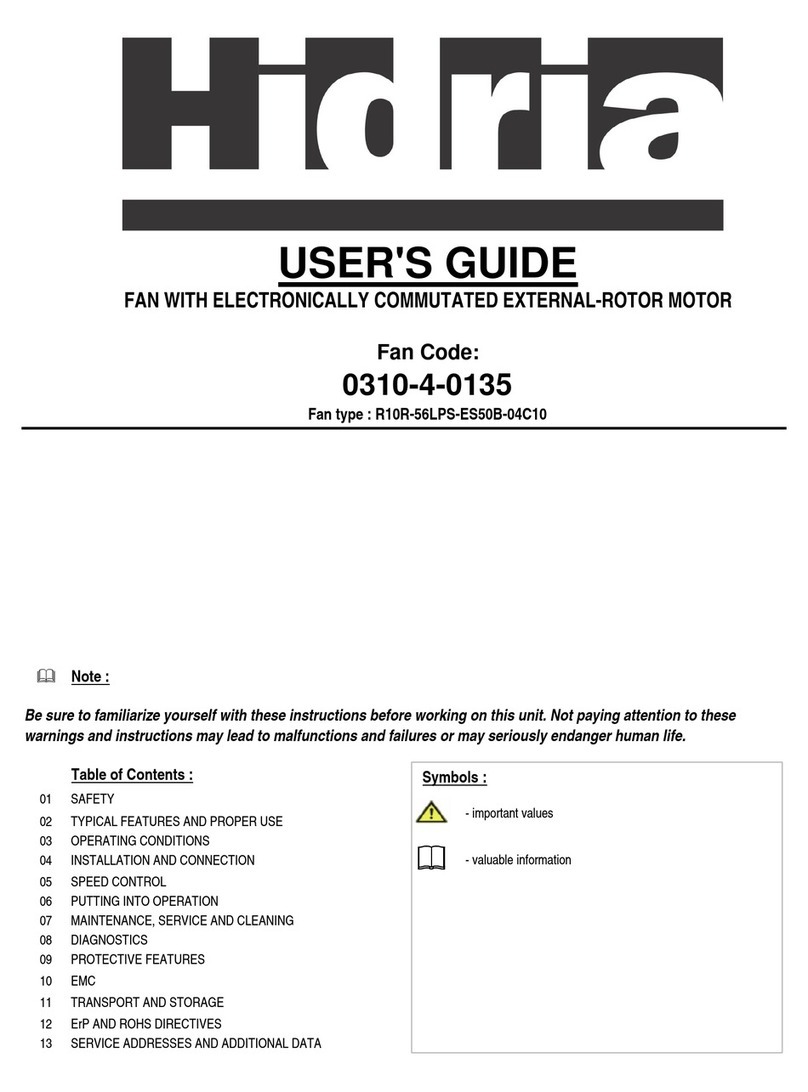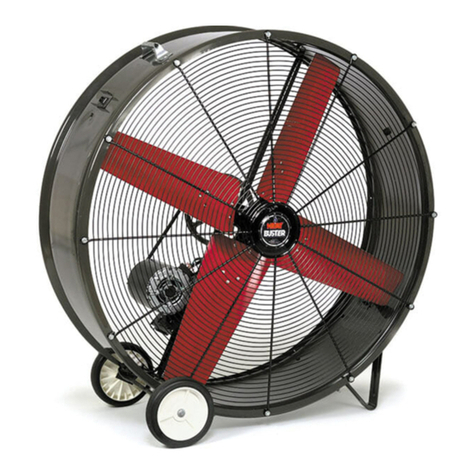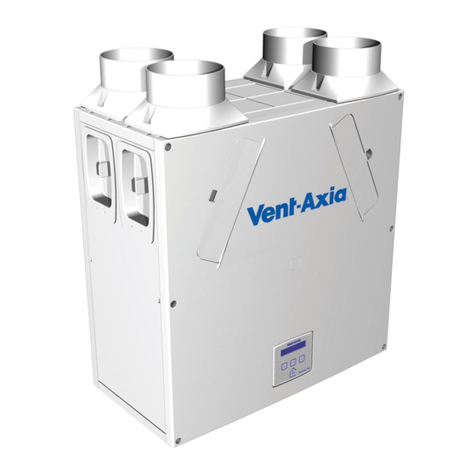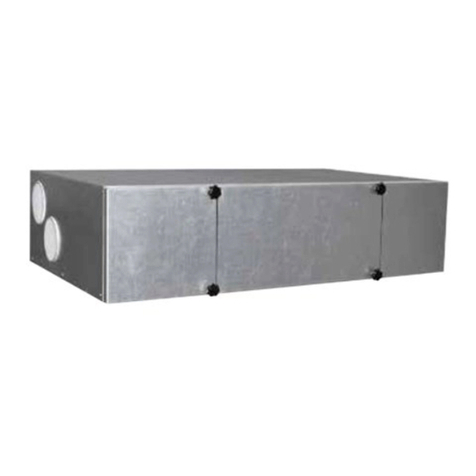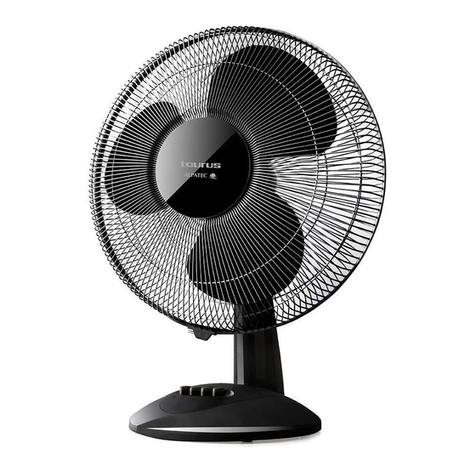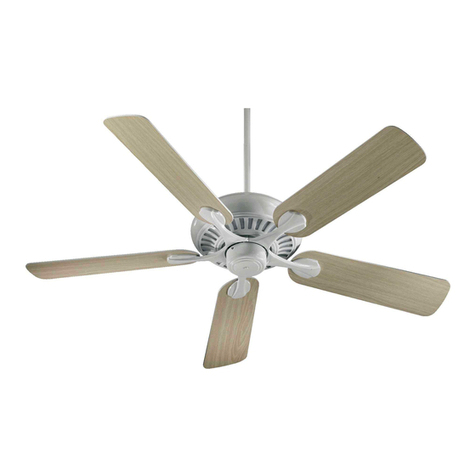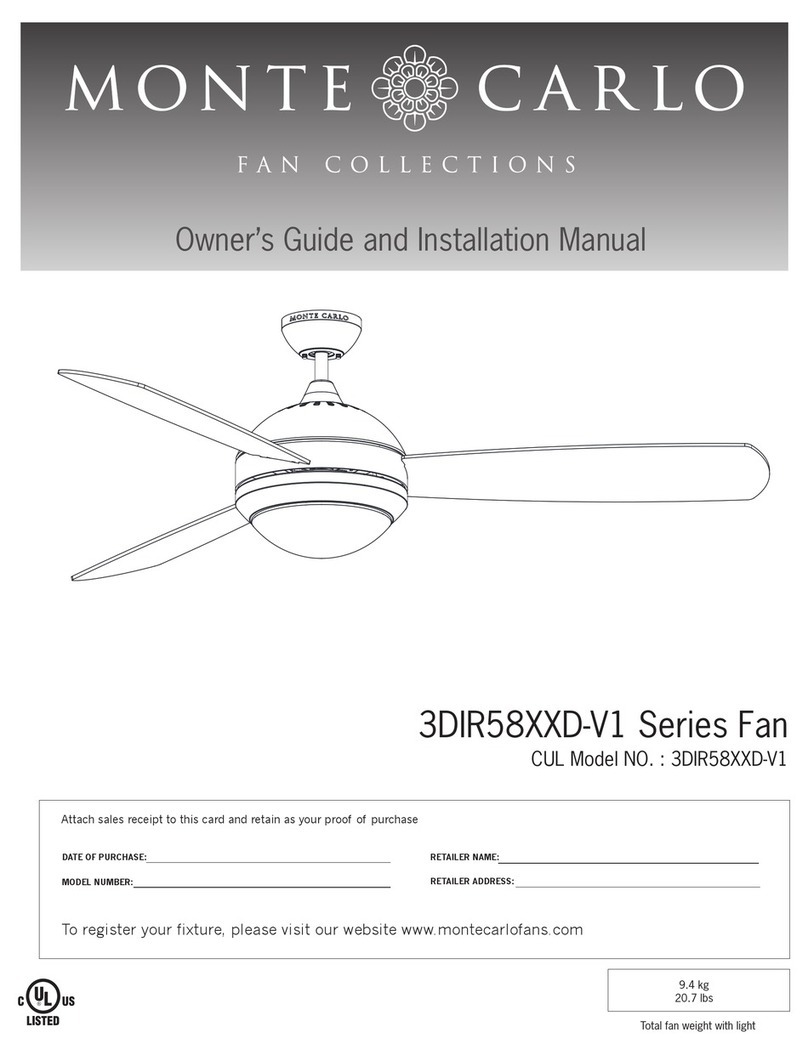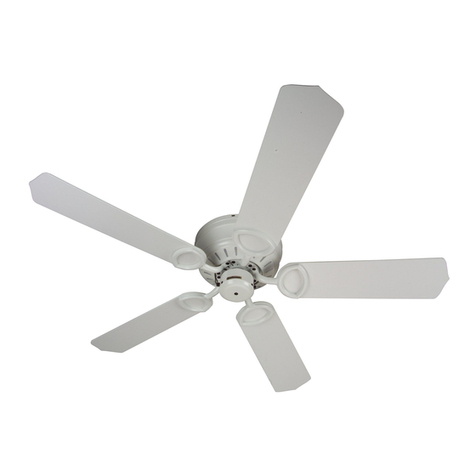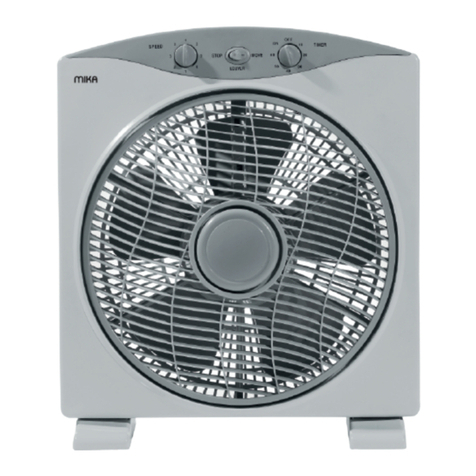5. Speed control
7
Various regulators can be fitted in order to regulate the speed. A
distinction is made between regulation of one fan or regulation of a
number of fans at the same time.
5.1 MX without speed control
When the MX is delivered, it operates at the maximum set speed
when connected to the power supply. This capacity is given on the
label on the top of the controls. Remove the LUS3 from the clamp
strip of the controls (see chapter 8.2) and the MX will operate at the
minimum speed. In order to operate the fan at a different speed, this
speed must be set using the Control Unit VU (see chapter 6.1).
5.2 Speed control of one MX fan
The following regulators are available for speed control of one MX
fan.
SAG 0-M
Rotating switch for continuous adjustment of the speed. (see diagram
2 page 13 & SAG 0-M leaflet)
SAG 0-5
Rotating switch for adjustment of the speed in five positions. (see
diagram 2 page 13 & SAG 0-5 leaflet)
SAG 0-2
Rotating switch for adjustment of the speed in two positions. (see
diagram 2 page 13 & SAG 0-2 leaflet)
5.3 Speed control of a number of MX fans
The following regulators are available for speed control of a number
of MX fans.
VG 31
Power supply unit for the parallel control of maximum 31 MX fans.
The unit is fed with 230 V AC voltage. Depending on the speed
regulation required, the power supply unit is connected to the SAG 0
- M, SAG 0-5 or SAG 0-2.
DNG 31
Unit for day/night switching of maximum 31 MX fans. The switching
times are set with a timer. A central switch can be used to
simultaneously switch all connected fans on and off. The unit is fed
with 230 V AC voltage. The DNG 31 can also be used for day/night
switching of MX-ZMV.
5.4 RSC servo contact
The servo contact can be used for the parallel switching of another
system component, a valve for example. The servo contact is supplied
in a separate housing which can be fitted under the cover of the MX,
for example.
5.5 LTG temperature control
The LTG is a temperature regulator with which the MX speed can be
continuously adjusted, depending on the temperature. The
temperature is measured using the supplied temperature gauge. The
temperature is set between 20°C and 50°C using a rotation knob on
the housing. Rotation of a potentio-meter in the housing adjusts the
bandwidth between 0.5°C and 10°C. The speed of the MX varies
between the minimum and maximum of the set bandwidth.
The LTG can also be used in combination with the VG31.
One LTG can be used to control a number of fans.
cooling or heating
There is a choice between ‘cooling’ or ‘heating’.
- For cooling, the MX will be speeded up when the temperature
increases. A rotation knob on the LTG housing is used to set the
temperature, whereby the MX operates at the minimum speed.
The MX is speeded up as the temperature rises. The maximum
speed is reached at the set temperature + bandwidth.
- For heating, the MX will be slowed when the temperature
increases. The rotation knob on the LTG housing is used to set
the temperature, whereby the MX operates at minimum speed.
The MX is speeded up as the temperature drops. The maximum
speed is reached at the set temperature - bandwidth.
The cooling or heating function can be set using a number of jumpers
within the housing. The LTG also includes a jumper which can be
used to select that the fan is switched off when it reaches the set
temperature.

